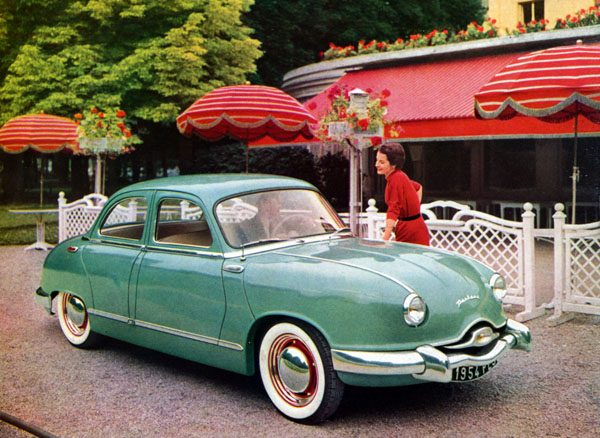
Whilst the names Citroen, Peugeot and Renault are well known, one of the greatest names in the history of French motoring, Panhard et Levassor is less well known. It sprang from a woodworking machinery firm which passed into the hands of Ren‚ Panhard and Emile Levassor after the death of the original owner. A friend of Levassor who had acquired the Daimler patent rights for France died in 1887 and his widow married Lavassor.
By 1891 they had a car with a centrally-mounted Daimler engine running successfully. After some experimentation with rear engines they finally settled on the classic automobile layout – engine at the front, gearbox midships and driven rear wheels, though initially the gears were exposed and final drive was by means of a chain. These early Panhards had four forward speeds and reverse. Panhard made Benz cars under licence and became one of the most successful of the pioneer manufacturers
Solid rubber tyres were adopted in 1892 and a float fed carburettor standardised in 1895. A Panhard gained joint first place along with Peugeot in the 1894 Paris-Rouen Trial, and in the following year enclosed gearboxes were used for the first time. Gradually the classic Panhard configuration took shape; aluminium gearbox casings came in 1897 and these were followed by pneumatic tyres, steering improvements and front radiators.
By 1900 the Panhard was the archetype of the medium-sized car: armoured-wood frame, quadrant change, automatic inlet valves, drip-feed lubrication, and final drive by side chains. The Hon C S Rolls’s Panhard was by far the fastest machine in the 1600km Trial. Panhard products formed the basis of a fairly large number of French specialists.
Between the wars the company somewhat stagnated but its fortunes revived in 1946 with the Dyna saloon, and the Panhard became a utility car of considerable performance. These were air-cooled fwd flat-twins of 610cc based on an all aluminium design of Francoise Gregoire, the French front-wheel drive design expert.
The original version was followed by a 23.9kW 750cc version in 1950 and two years later there was an 850cc 5CV as well. Specialist cars using Panhard mechanical components were DB, Veritas, Marathon and Arista. Even faster Dynas were evolved.
Far more ambitious was the 1954 Dyna saloon, a bulbous and ugly machine in alloy – no castings were used. Both the engine transmission group and the dead rear axle were removable as units, a petrol heater was standard and it could carry six people at 108 km/h with a 7.0-litres per 100km fuel consumption. Sales in 1951 reached 14,000 and by 1957 this had climbed to an annual rate of 30,000. It survived in the range for ten years and modifications along the way included an all-steel body and a high performance version, the 45kW Tigre.
In 1955 Citroen took an interest in the company and ten years later the old established Panhard concern was fully integrated into Citroen. Production ceased just two years later. Since Panhards were expensive and, by the 1960s, relatively crude the real wonder is that the marque lasted so long.








